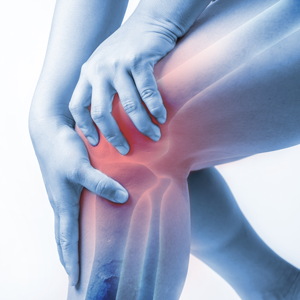Loss of Range of Motion in Virginia Beach
 If you’ve ever experienced a frozen shoulder, a knee that doesn’t extend like it used to, or neck stiffness, you’re likely suffering from a loss in your range of motion.
If you’ve ever experienced a frozen shoulder, a knee that doesn’t extend like it used to, or neck stiffness, you’re likely suffering from a loss in your range of motion.
When we experience this loss, it prevents us from accomplishing activities of daily living (ADLs). We cannot drive safely; we’re unable to turn our necks to check our blind spot or check safely for pedestrians. We cannot shower, wash and brush our hair, properly care for ourselves after using the bathroom, or get dressed without help. We have difficulty getting in and out of the car and might even find walking the dog hard.
There is hope, however, and it can be found through chiropractic care.
How Does It Begin?
That adage we’ve so often heard, “If you don’t use it, you lose it,” is true regarding our ability to move our joints properly. Technically speaking, loss of range of motion is the inability to move your back, neck, shoulder, hip, knee, etc., through their full range potential.
All our joints are designed to have movement patterns. When we experience a lack of activity due to a sedentary lifestyle, old injuries, or simply growing older, this prevents our joints from being lubricated. Joints are different from muscles in that no blood supply helps move nutrients into the joint and waste out. The only way to do that in a joint is to keep moving it.
The lack of movement in the body causes a trickle-down effect. For example, if someone has an ankle that is affected, it can change a person’s gait, causing them to limp. This will then negatively affect the hips, which causes spinal compression and movement patterns. If this continues without treatment, it can affect other joints and cause further discomfort, soreness, aches and pain.
How Chiropractic May Help
Chiropractic adjustments restore the range of motion to the body. During your exams, one of our highly skilled chiropractors finds the areas of the body where your range of motion has been limited. They will then use various methods to restore that movement in the body, either manually or with the help of special chiropractic instruments.
Manual adjustments are a hands-on technique, or what some consider the “snap, crackle, pop” adjustment. We also use an Activator to perform instrument-assisted joint mobilization when joints aren’t healthy enough for a manual adjustment.
For patients with sacroiliac joint difficulties, which is your hip and pelvic region, a drop technique is performed on a special table with sections that drop out to help the chiropractor make adjustments. This helps to restore spinal mobility, range of motion and health in general.
Soft tissue work will also be done to help break up fascial adhesions that can restrict range of motion, particularly in the shoulders and neck. And together, those adjustments and tissue work make it easier to move. We can feed our joints the nutrients they need, experience less pain or achiness, and feel healthy again!
Additional Exercise and Rehab
Restoring motion to your body also requires some homework. It goes to great lengths to reinforce the treatment you’ve been provided at Body Logic. When you are given exercises to do at home, it helps keep your muscles stretched and your body “loose,” so the next chiropractic adjustment can occur more efficiently.
Lifestyle Modifications and Patient Education
Patients are also advised to improve their wellness routines throughout treatment.
It’s important we’re hydrated so there’s ample fluid, known as synovial fluid, within our joints. If we’re dehydrated and don’t have enough fluid in our joints and muscles, we will automatically limit our range of motion because our muscles don’t stretch or bend like they should.
Getting up and moving is also a large part of improving your health and wellness, in addition to the chiropractic adjustments. It’s important to get up and stretch at least once every hour, walking around and getting the blood flowing, especially if you work behind a desk. A standing desk, which can be lowered and raised, can also help battle loss of range of motion.
If you travel frequently, try doing pelvic tilts and squeezing the gluteal muscles while sitting on the plane. This gets your circulation flowing and activates your muscles.
We Can Help You Regain Your Freedom
If you or a loved one is experiencing a loss of the range of motion in their body, chiropractic can be an important holistic approach to include in your health and wellness routine. Contact us today to schedule an appointment and take that first step toward living your life without physical limits.

